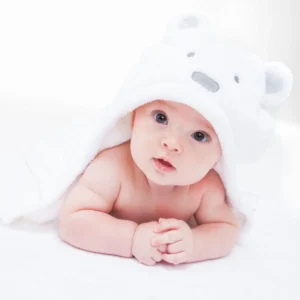Understanding Your Baby’s Developmental Milestones: A Guide for Parents and Caregivers
Being a mother, witnessing your child grow up is the best part of parenting. Every smile, sound, and step feels like a precious achievement. While babies generally follow a similar growth pattern, it’s important to remember that every child develops at their own pace. Some may reach milestones a little earlier or later than othersa nd that’s completely normal.
This guide walks you through the key developmental milestones from birth to 2 years, covering physical growth, cognitive and emotional development, social skills, and when to seek professional guidance if needed.

0–3 Months: Adjusting to the World
Physical Development
- Lifts head briefly during tummy time
- Starts to move arms and legs more smoothly
- Grasps your finger when placed in their palm
Cognitive & Emotional Growth
- Recognizes familiar voices, especially parents
- Begins to focus on faces and follow objects with eyes
- Shows early smiles as a social response
Social Interaction
- Starts cooing and making simple sounds
- Calms when held, rocked, or soothed
Parental guidance
- Offer tummy time daily for neck and shoulder strength
- Talk, sing, and maintain eye contact—it builds connection
- Respond to cries promptly to develop trust
Warning Signs
- Doesn’t respond to loud sounds
- Appears very stiff or floppy
- Doesn’t follow objects with eyes
3–6 Months: Exploring and Engaging
Physical Development
- Rolls from tummy to back and later from back to tummy
- Reaches for and grasps toys
- Holds head steady without support
Cognitive & Emotional Growth
- Recognizes familiar faces
- Shows excitement when interacting with people
- Begins to explore toys by mouthing or shaking them
Social Interaction
- Laughs and squeals
- Enjoys playful interactions like peek-a-boo
- Starts to mimic sounds
Parental Guidance
- Encourage safe floor play with colorful toys
- Offer rattles and soft items to strengthen hand coordination
- Keep a predictable routine to provide security
Warning Signs
- No social smile by 3 months
- Cannot hold head steady by 4 months
- Doesn’t reach for objects by 6 months
6–9 Months: Moving and Bonding
Physical Development
- Sits without support
- Begins crawling or scooting
- Transfers objects from one hand to the other
Cognitive & Emotional Growth
- Understand “no” (though you may not always listen!)
- Looks for partly hidden objects (early memory skills)
- Shows preference for familiar caregivers
Social Interaction
- Responds to own name
- Recognizes strangers and may show stranger anxiety
- Uses babbling with varied sounds
Parental Guidance
- Provide safe spaces for crawling and exploring
- Read picture books aloud to encourage language
- Reassure baby when meeting new people
Warning Signs
- Cannot sit without support by 9 months
- No babbling sounds
- Doesn’t show recognition of caregivers
9–12 Months: Standing and First Words
Physical Development
- Picks up small items using thumb and finger
- Pulls to stand and might take a few initial steps while carrying furniture.
- Crawls with more speed and coordination
Cognitive & Emotional Growth
- Understands simple instructions (“come here,” “give me”)
- Imitates gestures like waving or clapping
- Develops strong attachment to caregivers
Social Interaction
- Says “mama” or “dada” (may not be specific yet)
- Enjoys interactive games
- Waves bye-bye
Parental Guidance
- Encourage walking with push toys
- Use simple words often and repeat them
- Offer safe finger foods to improve fine motor skills
Warning Signs
- Doesn’t crawl or pull to stand by 12 months
- Doesn’t say single words
- Shows no interest in interaction
12–18 Months: First Steps and Words
Physical Development
- Walks independently
- Climbs onto low furniture
- Uses spoon with help
Cognitive & Emotional Growth
- Points to body parts when named
- Understands more than they can say
- Starts showing independence (wants to feed self, explore)
Social Interaction
- Says 5–20 simple words
- Follows simple instructions
- Shows affection to familiar people
Parental Guidance
- Allow safe exploration indoors and outdoors
- Use everyday routines (bathing, eating) to teach words
- Praise efforts and encourage independence
Warning Signs
- Doesn’t walk by 18 months
- Doesn’t use gestures (pointing, waving)
- Has no spoken words
18–24 Months: Toddlers on the Move
Physical Development
- Runs and kicks a ball
- Climbs stairs with help
- Builds a tower with blocks
Cognitive & Emotional Growth
- Begins pretend play (feeding a doll, talking on toy phone)
- Recognizes self in the mirror
- Understands two-step instructions
Social Interaction
- Vocabulary grows rapidly (50+ words by age 2)
- Starts combining words into short sentences
- Plays alongside other children (parallel play)
Parental Guidance
- Encourage pretend play and storytelling
- Provide safe climbing and running opportunities
- Support speech by naming objects and actions frequently
Warning Signs
- Doesn’t walk steadily
- Doesn’t use at least 15 words by 2 years
- Shows no interest in playing or interacting
When to Consult a Pediatric Professional
While variations in development are normal, trust your instincts as a parent. Seek professional advice if:
- Your baby misses several milestones in a row
- You notice sudden loss of skills they once had
- Your child doesn’t respond to sounds, smiles, or attempts at interaction
Every baby’s journey is unique. Developmental milestones are guideposts, not strict rules. Celebrate each small achievement, and remember that love, patience, and a supportive environment are the most important ingredients in helping your little one thrive.
